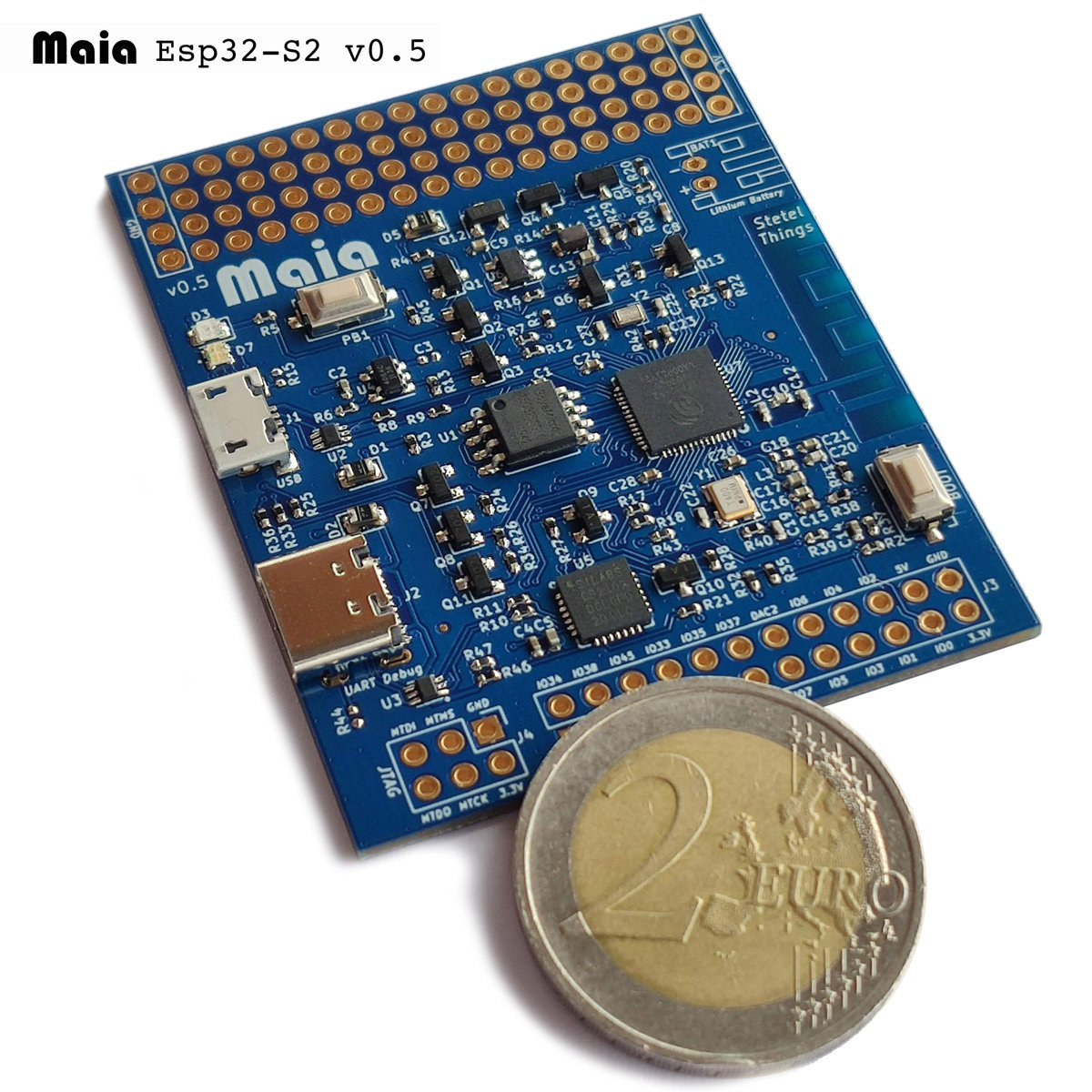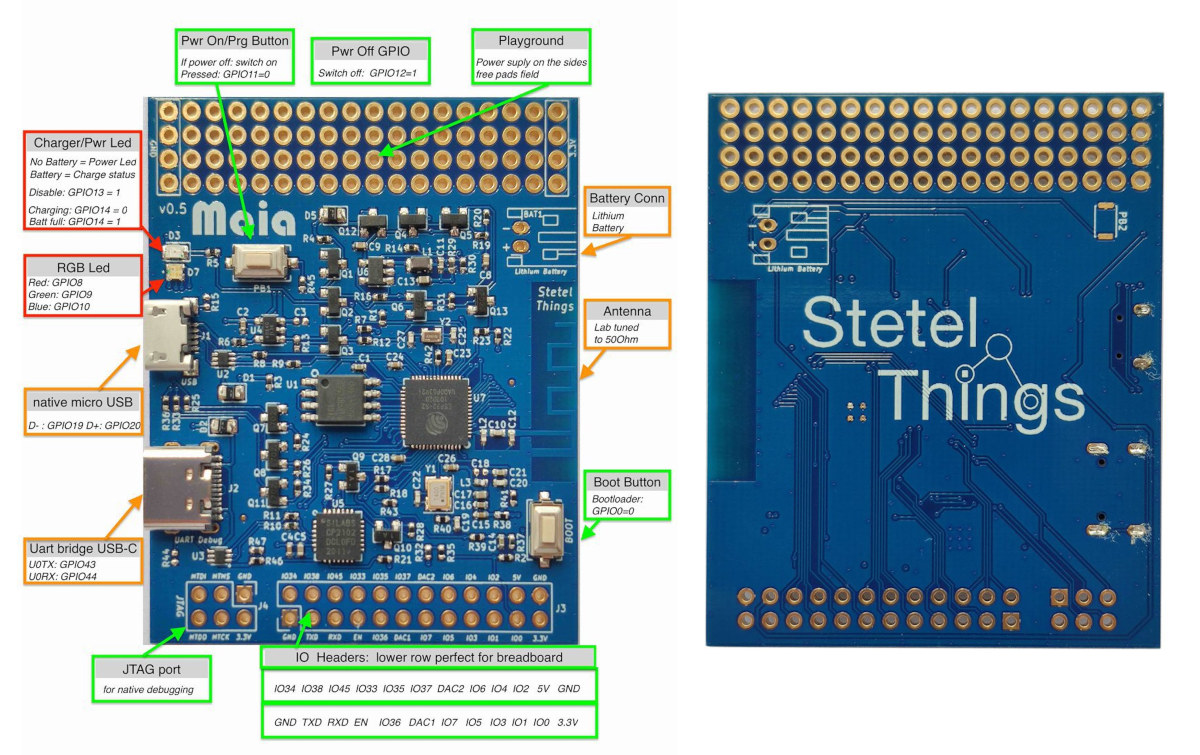One of the advantages of the new ESP32-S2 processor is that it offers a USB OTG interface. So far few boards took advantage of the extra interface, and one of the rare ones is Cucumber ESP32-S2 board with a USB-C OTG port.
There’s another option with a slightly unusual form factor thanks to Stetel Things’ Maia ESP32-S2 development board with the typical USB-C port for power and debugging, plus a micro USB OTG port, and a small prototyping area.

Maia ESP32-S2 development board specifications:
- SoC – Espressif System ESP32-S2 single-core LX7 processor at up to 240 MHz with an ultra-low-power (ULP) RISC-V CPU, 320KB RAM
- Storage – 4MB flash
- Connectivity – 802.11b/g/n WiFi 4 with on-board PCB antenna
- USB
- 1x Micro USB OTG port for data and power
- 1x USB-C port for programming (virtual UART) and power
- Expansion
- 24-pin I/O header
- “Playground” prototyping area with 4x 18 through holes including columns for GND and 3.3V
- Debugging – Console via USB-C port, 6-pin 2.54mm pitch JTAG header
- Misc – Dual-use user/power button, Boot button, RTC clock, RGB LED, power/charging LED
- Power Supply
- 5V via micro USB or USB Type-C port
- Unpopulated 2-pin battery connector for 3.7V LiPo battery, plus integrated Lithium battery charger IC
- Dimensions – 5.9 x 4.9 cm
- Weight – 13.6 grams

The board should be programmable with the ESP-IDF SDK, Arduino, MicroPython, but the developer did not provide examples for those, and instead provided instructions for ESP RainMaker and DFU web flasher in a Github repository.
Maia ESP32-S2 development board is sold for $19.70 on Tindie, and will soon be available on Amazon DE/IT as well.A plastic enclosure kit with lithium battery, power button, micro USB port, and light-guides for RGB and charging LED is also in the works, but not for sale just yet.

Jean-Luc started CNX Software in 2010 as a part-time endeavor, before quitting his job as a software engineering manager, and starting to write daily news, and reviews full time later in 2011.
Support CNX Software! Donate via cryptocurrencies, become a Patron on Patreon, or purchase goods on Amazon or Aliexpress




